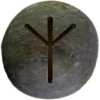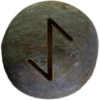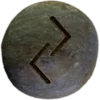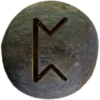Last Updated on December 16, 2024


Bárnstokkr (pronounced BARN-stok-kr) is a legendary tree central to the Völsunga saga, a key narrative in Norse mythology ![]() . The name translates to “child’s trunk” or “offspring tree,” with bárn meaning “child” and stokkr meaning “tree trunk” or “log.” Some texts refer to it simply as “the trunk,” while others name it the “great oak of Völsung’s hall.” Bárnstokkr grew at the heart of the hall of King Völsung, its branches entwining with the rafters and its roots firmly planted in the earth below.
. The name translates to “child’s trunk” or “offspring tree,” with bárn meaning “child” and stokkr meaning “tree trunk” or “log.” Some texts refer to it simply as “the trunk,” while others name it the “great oak of Völsung’s hall.” Bárnstokkr grew at the heart of the hall of King Völsung, its branches entwining with the rafters and its roots firmly planted in the earth below.
The tale of Bárnstokkr begins when Odin, disguised as an old man, thrusts his sword into the trunk of the tree during a grand feast. Odin declares that only a worthy hero can remove the sword, which he names Gram. This challenge sets the stage for Sigmund, the son of King Völsung, to prove his strength and claim the sword. The sword, later reforged by Sigmund’s son, Sigurd, becomes a crucial artifact in the saga, tied to heroism, fate, and divine intervention.
Bárnstokkr symbolizes strength, lineage, and connection to the divine. The tree’s presence in the Völsunga hall represents the family’s deep-rooted ties to their ancestry and the gods. Scholars suggest Bárnstokkr reflects the mythic world tree, Yggdrasil, emphasizing its symbolic importance. The imagery of a central tree appears in various Indo-European traditions, making Bárnstokkr an essential part of mythological and literary studies. Its enduring legacy lives on through adaptations of the Völsunga saga in Norse texts and medieval literature.
Elder Futhark Runes Associated with Bárnstokkr
Two Elder Futhark runes closely align with Bárnstokkr: Algiz and Eihwaz. ![]()
Algiz (ᛉ) represents protection and connection to higher powers, fitting Bárnstokkr’s link to Odin and divine fate. Its shape resembles a tree or reaching branches, reinforcing Bárnstokkr’s symbolism of strength and spiritual connection.
Eihwaz (ᛇ) signifies resilience, transformation, and the axis of life, directly echoing Bárnstokkr’s role as a unifying element between realms. The rune’s ties to trees and endurance further connect it to Bárnstokkr’s mythology.
Importance to Asatruar
For modern Asatruar, Bárnstokkr embodies themes of strength, destiny, and divine guidance. Its role in the Völsunga saga emphasizes perseverance and trust in the gods’ plans. Bárnstokkr’s connection to the ancestral hall resonates with the importance of kinship and tradition in Heathenry. As a symbolic anchor, it reminds Asatruar of their spiritual roots, inspiring them to honor their past while forging their future paths.


